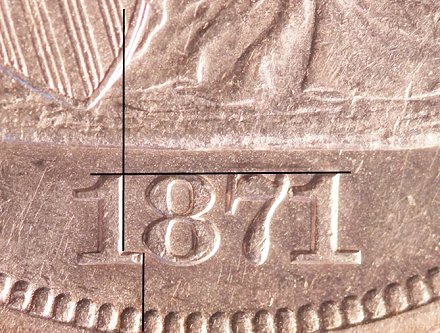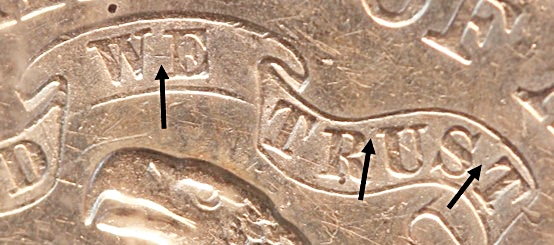|
|
Comments: This is the only use of Obverse 10 and the third and final use of Reverse C in 1871. Reverse C is transitional, paired with an additional obverse in 1872. |
Obverse 10 The photo below shows the Obverse 10 attribution grid.  1871 Obverse 10 attribution grid Obverse 10 exhibits no notable die markers. However, once the reverse is identified as Reverse C the date position should be sufficient to uniquely identify the marriage.
|
1871 Reverse C features a light die line joining the middle of WE in the motto, pictured in the next photo. The additional arrows point to two lumps that serve as additional markers on high-grade coins. All these markers are very subtle. They may not be visible on lower grade coins. Even on high grade coins they can disappear if the lighting isnít at the right angle.  1871 Reverse C die line and lumps
|
| Photo credits:
Obverse 10 and Reverse C: 1871 PCGS AU58, from the Osburn-Cushing reference collection. |
